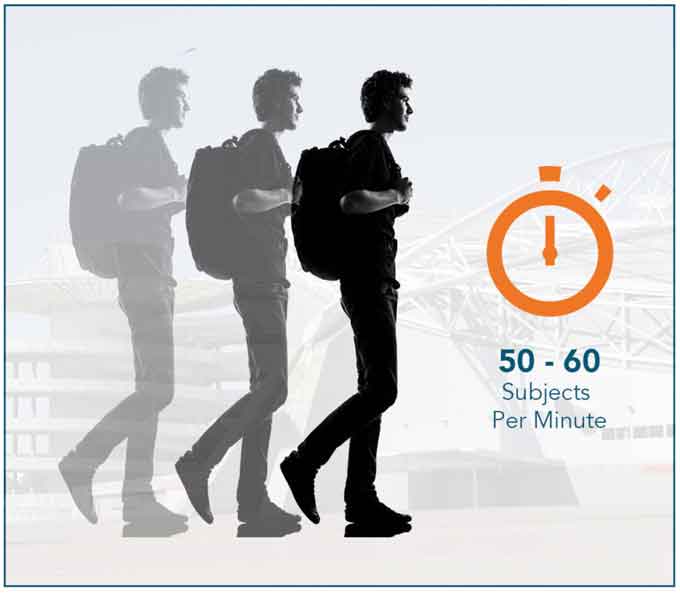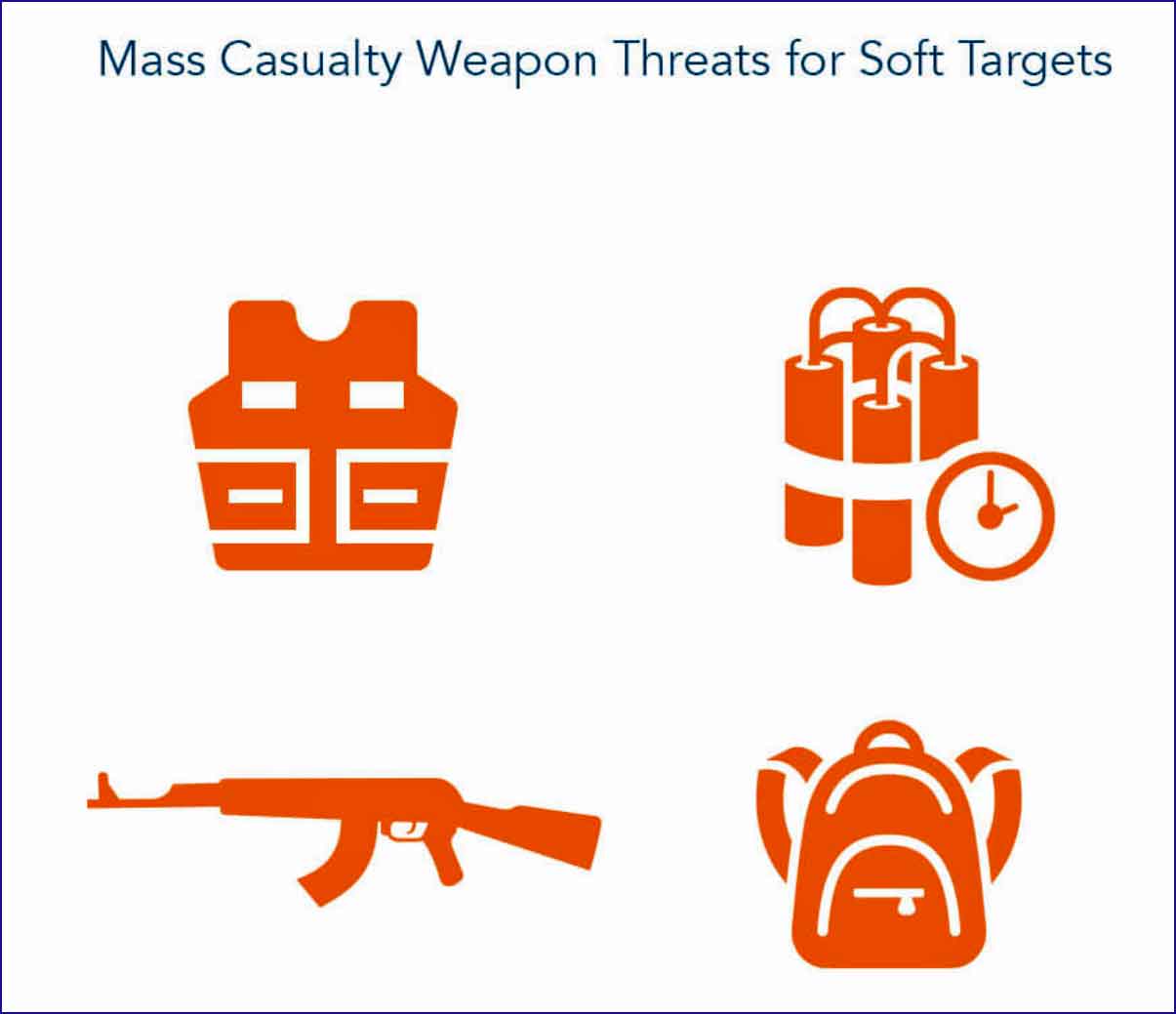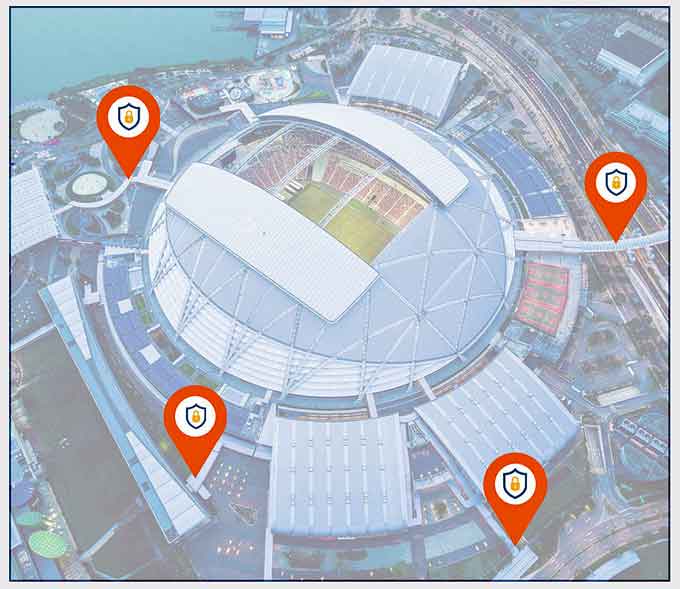
By Jim Viscardi, Metrasens Vice President of Global Security, a Platinum Award Winner in the 2017 ‘ASTORS’ Homeland Security Awards Program
Live events at large venues like arenas, stadiums or convention halls – whether they involve wrestlers breaking chairs over each other’s heads, Axl and Slash letting bygones be bygones and reuniting Guns ‘n’ Roses, your favorite NFL team annihilating the opposition 62-3, or a convention involving anything from politics to food to Star Trek – are exciting affairs that channel the camaraderie of the crowd into a powerful collective energy.
But they also are vulnerable to threats.
Terrorists and other malefactors have known for centuries that any large gathering of people has inherent vulnerabilities on which they can prey: Crowds make it hard for security to keep track of any single person or spot unusual behavior, and the number of people congregated in one space amplifies the impact of any attack.

In recent years, organizers of large events have augmented the security methods they use to protect a venue, using both walk-through metal detectors and hand wands, and deploying K9 and police units to patrol the lines to enter security.
But these current methods share a universal flaw:
To be caught, evildoers have to be on the verge of actually entering the venue with hundreds of other people, which means they can still cause a massive amount of destruction.
Current Methods Are Not Enough
Conventional walk-through metal detectors are a compromise between effective screening and high throughput, as they successfully detect metal objects, but only can screen about five or six people each minute.

Featuring an industry-leading 10-second setup, Proscreen 900 is ready to start screening quickly with a 95%+ clearance rate, able to screen 50-60 subjects per minute (3,000 – 3,600 per hour) with zero divestiture.
They are generally placed 10 to 20 yards from a venue’s front façade, either just outside or just inside, to screen people as they enter the facility.
Hand wands are used for anyone that sets off the walk-through detector as a secondary screening method for confirmation.
Many facilities also use observational methods to screen, such as drones, CCTV, security officers or police walking the crowd and looking for suspicious behavior, or explosives-sniffing K9 units patrolling the area.
Each of these methods has intrinsic limitations.
Observational security methods are just that – observation-based, not detection-based.
They rely much more heavily on human factors that introduce greater degrees of error and chance, and positive visual identification of a suspicious threat requires a relatively close proximity to observe the threat.
They’re also slow and laborious.
Walk-through detectors and wands will catch someone trying to enter a facility with a weapon, but by the time they do, it may be too late – a terrorist will already be well within proximity to do a lot of damage.
Bad guys don’t need to actually enter the venue; they just need to get close enough to injure or kill a large number of people.
That can happen – and has happened, such as with Manchester Arena bombing in 2017 – right at the security point, where a terrorist will be surrounded by dozens or hundreds of people and 10 to 20 yards away from the critical asset: the interior of the venue.
(Manchester Arena is one of the largest indoor venues in Europe. The suicide bombing happened at a stadium concert which killed at least 22 people and injured almost 60 others. Here’s how events unfolded on that tragic Monday evening. Courtesy of RT and YouTube. Posted on May 23, 2017)
Security personnel are aware of these pre-security-screening vulnerabilities around the perimeter of the venue.
What they haven’t had until recently is a way to screen mass amounts of people for weapons of mass casualty as far away from the critical asset as they can, and as far away from densely populated areas as they can, all while not impeding throughput resulting from the requirement for patrons to divest their possessions.
Expand Your Reach
The far perimeter of a venue is an ideal place to screen for weapons of mass casualty.

Most of the time, a terrorist is trying to get closer to the immediate perimeter of the venue, to inflict the most damage to large groups of people waiting to get in; farther away, event attendees are walking toward the entrance and thus are more dispersed, not standing in clusters or lines.
This advance screening is possible using ferromagnetic detection systems (FMDS).
In the most basic terms, FMDS uses passive sensors that evaluate disturbances in the earth’s magnetic field made by something magnetic moving through its detection zone.
Everything else is invisible to it; it doesn’t see people, clothing, backpacks, purses, etc.
Nothing can be used to shield the threat, because FMDS doesn’t detect metallic mass; it detects a magnetic signature, down to a millionth of the earth’s magnetic field.
It is also highly accurate – there is no false alarm rate, because it is programmed to find only what security personnel need to find (e.g., a weapon).
Although it is a passive technology, it is more effective and reliable than using observational security methods to screen a perimeter, because the technology will never miss something the way a human would.
An important point is that the system only works on moving objects.
This makes it immune to environmental conflicts such as rebar that would trip up conventional metal detectors, and allowing people to be screened quickly and unobtrusively without stopping to divest their possessions as they walk toward a venue – up to 50 or 60 people a minute.

FMDS does not need people to be organized into lines or groups; it simply detects a magnetic signature on anything that passes.
It runs on batteries – there is no need for an electricity source, as with a walk-through detector – and can be placed on just about any form factor (a pole, a stand, etc.).
This gives security personnel flexibility when deploying FMDS, allowing them to create a wide perimeter around a venue without worrying about portability or a power source.
Screening can be as obvious or as concealed as personnel prefer for a particular situation, based on the form factor they select.

Proscreen 900 is easily integrated within current facility considerations, requiring no added infrastructure changes or costly construction modifications.
All of these combine into a solution that creates a way to close a gap in mass screenings at large events, by expanding the secure perimeter and creating a highly accurate way to detect weapons of mass casualty farther away from a critical asset and large crowds.
It does not replace screening for smaller items necessarily, and all large venues should use a layered security solution that also deploys tactics like roving security guards, walk-through metal detectors and hand wands.
FMDS simply gives the opportunity to add a layer of security where there currently is not an effective solution.
More Effective Mass Screening – Without Disruption
Pessimists sometimes muse the world is getting more dangerous with each passing year, and that technology is at least partially responsible for both the breadth and depth of the increasingly creative ways bad guys harm people.
But some technologies also are responsible for helping to fight against those threats and make the world safer, and FMDS is one of those.

By providing a foolproof method of detecting weapons of mass casualty before terrorists get too close to an event venue, FMDS gives event security personnel a way to better protect large events, making them less dangerous and keeping people safe.
Jim Viscardi is vice president of global security for Metrasens. Viscardi can be reached at jviscardi@metrasens.com.
Metrasens Takes Platinum in the 2017 ‘ASTORS’ Homeland Security Awards Program
-
Metrasens
- Platinum ‘ASTORS’ Award Winner
- Proscreen 500
- Best Cell Phone Detection Solution

Over 100 distinguished guests from National, State and Local Governments, and Industry Leading Corporate Executives from companies allied to Government, gathered from across North America and the Middle East to be honored from disciplines across the Security Industry in their respective fields which included:
- The Department of Homeland Security
- The Department of Justice
- The Security Exchange Commission
- State and Municipal Law Enforcement Agencies
- Leaders in Private Security
Recognized for their Innovative Training and Education Programs, Outstanding Product Development Achievements and Exciting New Technologies to address the growing Homeland Security Threats our Nation is facing.
Nominations are now being accepted for the 2018 ‘ASTORS’ Homeland Security Awards at https://americansecuritytoday.com/ast-awards/.
American Security Today will be holding the 2018 ‘ASTORS’ Awards Presentation Luncheon to honor Nominees, Finalists and Winners in November 2018, in New York City.
Learn More…
Metrasens Proscreen 500 in ‘ASTORS’ Awards (See in Action, Video)

















